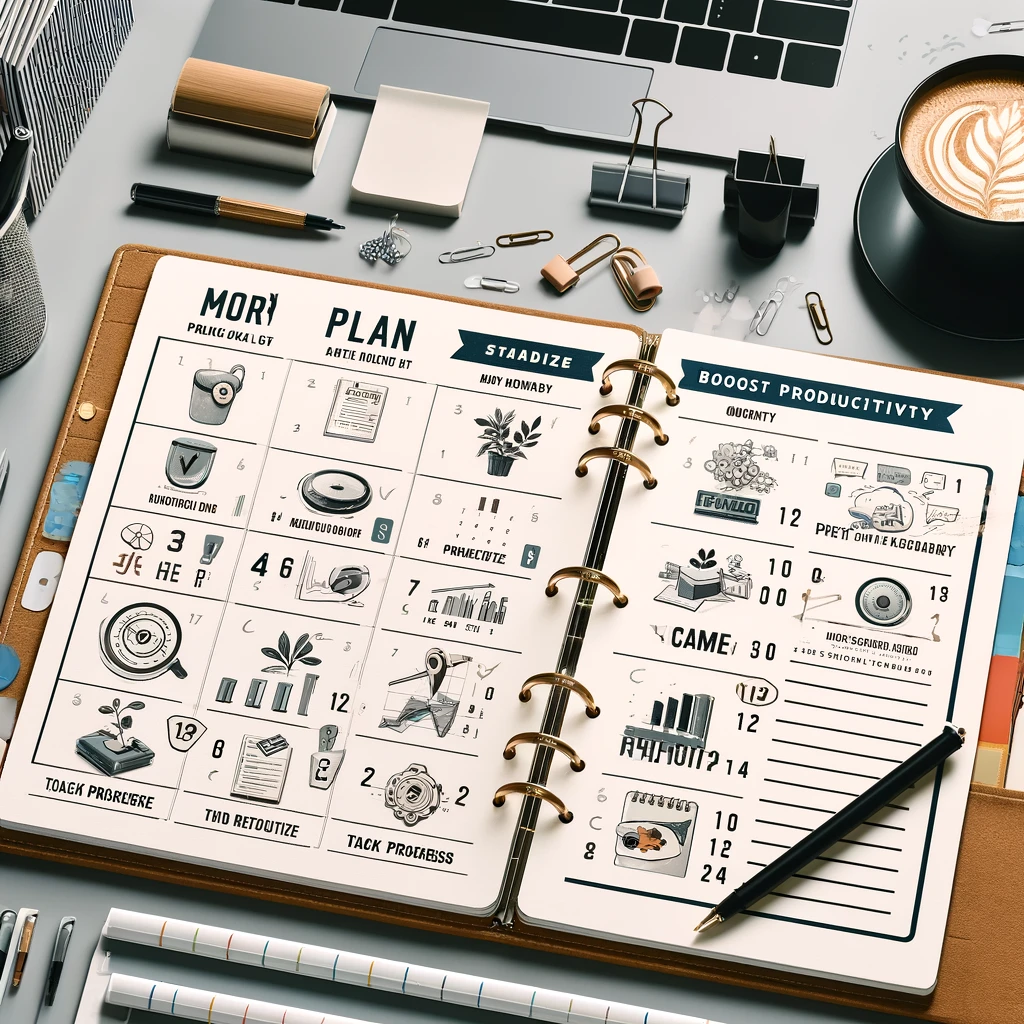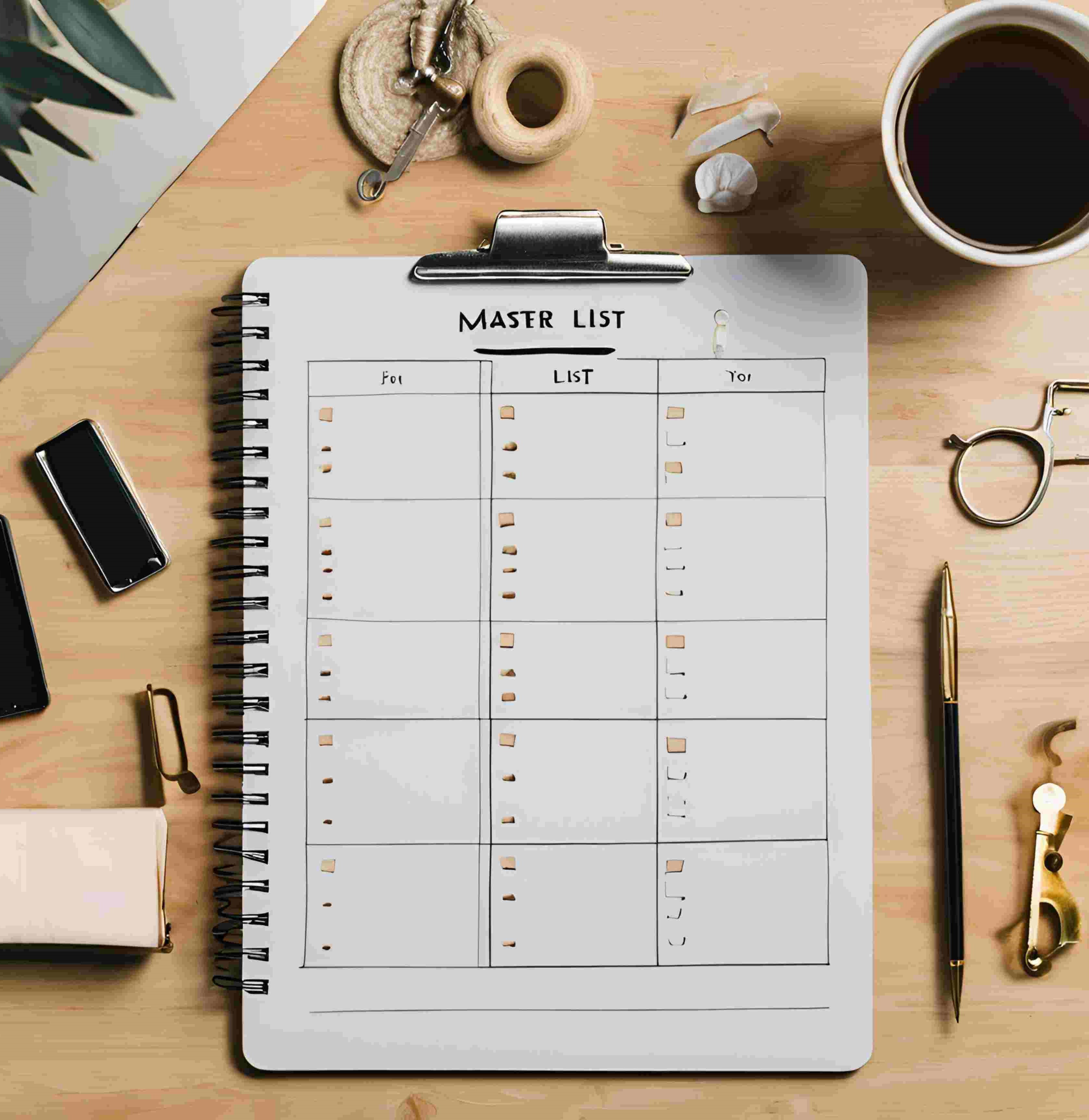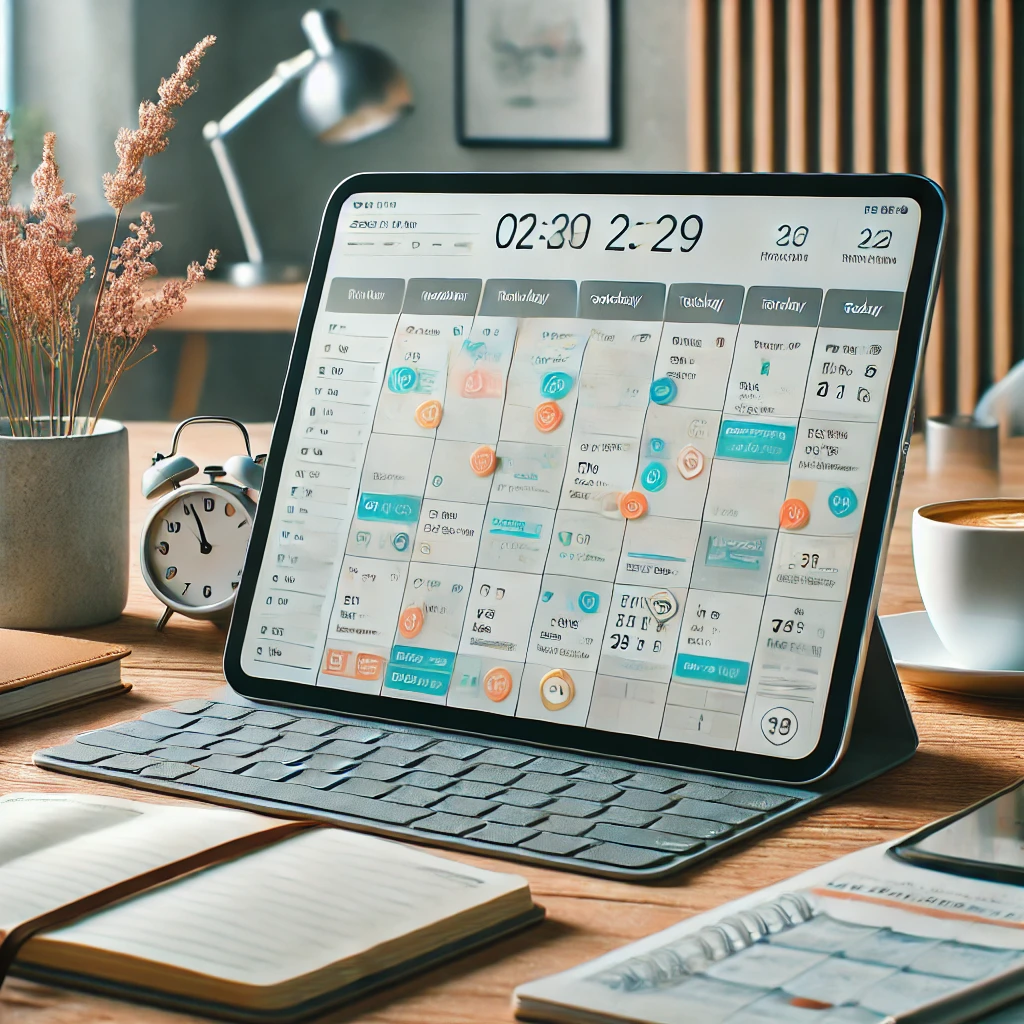Getting better at work is key to doing well in your job. It’s important to plan well. So, when you start trying to work better, have a strong plan each month.

Think about how you feel after you work out. Monthly tasks work the same way. They help you feel good. They also help stop the mess from not planning. Plan your time well with lists, time blocks, and a digital calendar. This makes you work and feel better, helping you stay calm.
Many jobs can now be done from anywhere because of the internet. About 37% of jobs can be done at home. This shows how important it is to work on your own well. More people are working from home because of COVID-19. By October 2020, many want to keep working from home.
Make a plan for your time. Sending emails early makes people reply faster. Working from home saves the time you would spend going to work. This extra time can make you do more in your day. By planning well, you tell everyone that your time is valuable. This makes your work and life better.
Ready to get better at work and manage your time well? Try these 12 tasks. They will help you work smarter each month. This way, every month gets better and better.
Introduction to Monthly Productivity Tasks
Setting up how you work helps you get more done in the same time. Around 82% of people don’t have a plan for managing their time well. This makes many folks inefficient. Organizing your tasks monthly can help. It makes your to-dos smaller and easier to handle. This helps your days go more smoothly, lowers your stress, and makes you better at managing your time.
Cal Newport, who knows a lot about being productive, says you can do as much work in 40 hours as in over 60 hours. He means if you plan your time well, you don’t have to work crazy long hours. This idea is called time blocking and it makes you more productive. Jack Dorsey, who started Square, says it’s good to theme your days. That means put similar kinds of tasks on the same day. This can help you do a lot of different things without getting too tired.
Task batching is also very helpful. It puts all alike tasks together. This makes it easier for your brain because you don’t have to change tasks as often. The Pomodoro Method is another good way to work. You work for 25 minutes and then take a break. This boosts your focus and how much you get done. Tools like Toggl and Asana can be great for keeping track of your time and tasks.
Planning your productivity well is very important. 90% of workers may be doing things that don’t really matter. This costs companies a lot in lost productivity. Monthly organizing helps cut down on these less important tasks. It gives you more time to spend on things you love and helps you have a good balance between work and your personal life.
Creating a Master To-Do List
The key to real productivity is a master to-do list. Write down everything, from the smallest to the biggest tasks. A master list lets you organize your life better. This way, you make sure you don’t miss anything important.

Why a Master To-Do List is Essential
A master to-do list is a game-changer. It keeps track of all tasks, both personal and work-related. With everything in one place, you can see clearly what needs to be done first. So, you manage your time better and make sure nothing important is forgotten.
The Process of Compiling a Master To-Do List
Building a master to-do list is easy but powerful. Begin with a brain dump, writing down every task. It’s also smart to break big tasks into smaller ones. This makes managing your workload easier.
Make sure each task is clear and doable. Always use action words at the start, and add a deadline. Group similar tasks to save time. And, keep big projects as small steps. Also, if you miss a task’s deadline, figure out why. And don’t forget to reschedule smart. Doing your to-do list at night sets up your day for success.
Implementing a Digital Calendar
Digital calendars are now key for managing our time well. They are more than just online schedules. They help us keep promises and remember important times.

Advantages of Digital Calendars
One big plus of digital calendars is how easy they make changing plans. Just click, hold, and move to a new time. Then, they send you reminders so you’re never late. You can also add color and fun emojis to show what’s what. This makes it easier to see what’s happening at a glance.
Digital calendars don’t limit you like paper ones might. You can share your schedule and update it with no fuss. This makes group work and family planning a lot smoother.
Tips for Using Digital Calendars Efficiently
First off, use your digital calendar daily. Keep your life on track with it. You can still use a paper one as backup, but your digital one should be your main focus.
Block off time for things you need to do every day. Use your digital calendar to track your progress. This will keep you moving forward.
Always add new events right away. This helps avoid double bookings. Also, make sure to look at your calendar every day. This will help you plan well and be ready for your next meeting or event.
Scheduling Focus Time
Setting aside focus time helps people work without getting distracted. It’s about dedicating certain hours solely to focus a lot on tasks. This deep focus lets workers achieve more in less time and boosts their productivity greatly.
The Importance of Focus Time
Research has proven that everything a person needs to do in a day can be done in 3-4 focused hours. By removing distractions, and focusing deeply, productivity can increase by as much as 500%. So, scheduling focus time helps show the real value of working without breaks.

How to Identify and Schedule Focus Time
For the best results, find the right moments in your day for focused work. It takes about 40-50 minutes to get fully into a task. So, setting aside 60-90 minutes of uninterrupted time works well. This is best done in the morning when your mind is the freshest.
Use tools like Microsoft Viva and Clockwise to plan your focus sessions ahead. These tools help keep meetings away from your chosen focus time. They also make sure you choose the most productive hours for work.
It’s also important to take short breaks and let your mind rest. Setting clear end times for each focus session prevents you from getting overwhelmed. Letting your team know when you’re focusing can also help everyone work together better. Try the Pomodoro technique for staying on task over long work periods, with its 25-minute work bursts and short breaks.
Prioritizing Daily and Weekly Tasks
Managing daily and weekly tasks boosts how much we get done. It’s key to being super productive. Ways like sorting tasks by how urgent and important they are help a lot. Tools such as the Eisenhower Matrix or the Most Important Task method break tasks into what needs doing first.
For flexible work, the Agile method is handy. It lets you adjust tasks as needed. With these tools, you can stay organized and on track easily.
Places like Teamwork.com and Asana give great options for planning each day well. Teamwork.com shows tasks in a Kanban board, making deadlines clear. It also lets you see what everyone is working on. Asana’s ‘My Tasks’ pulls all your to-dos together, making it easy to see what’s most important.
Studies show most of us can’t really multitask. So, it’s important to set aside time to focus on one thing. This is why choosing when to work on tough tasks is vital. Adding up time blocks for work and taking short breaks helps a lot. It keeps things moving without getting overwhelmed.
Sorting tasks helps a bunch. It makes work smoother and keeps life in balance. By using tools that map out all our work, we stay ahead of the game. This way, we can handle surprises well and make smarter choices with our time. With the right tools, handling each day and week is well organized and keeps you productive.
Limiting Distractions
Minimizing distractions is key for getting more done. Today, we are all more connected. To stay focused at work, it’s smart to know what might distract you. Then, find ways to beat those distractions.
Common Distractions to Avoid
Many things can pull us away from work. For example, watching too much TV keeps 42% of Americans from working well at home. We also spend a lot of time on our phones every day, not all of it for work. At work, most people face several interruptions daily. And many feel that meetings take away focus without being very useful.

Too many notifications can be a big issue. Just think, Gmail can send almost 300 alerts in a week! Social media is a big player here too. Apps like Instagram and Twitter are always trying to get our attention.
Tools and Techniques to Minimize Distractions
There are ways to fight these distractions and focus better. The Pomodoro Method is one. It suggests working hard for 25 minutes and then taking a short break. This helps keep energy up and distractions down. It’s also important to schedule regular breaks to avoid getting too tired.
Another good idea is to give less important tasks to someone else. This could be an assistant at work or a virtual one. It gives you more time for what’s really important.
Turning off non-essential notifications is helpful too. And using tools like Things for time management can make a big difference. It might take up to 18 days to get used to a new way of working. But, sticking to good habits can help beat distractions.
Finally, it’s key to learn to say no. We must be careful about taking on too much. Refusing what’s not really necessary helps keep our focus sharp.
Monthly Tasks to Reassess Goals
It’s vital to check and adjust our goals often. This helps us grow both personally and professionally. By looking at our goals monthly, we make sure our daily actions help us achieve big dreams.
Studies show that planning every month can up your chance of success by 30%. Many workers find that starting the month with a plan boosts how much they get done. So, keeping up with monthly check-ins keeps you sharp and makes you work better.

Goals should be SMART—specific, measurable, attainable, relevant, and time-bound. When you set SMART goals, you’re 70% more likely to reach them, especially in jobs like marketing. Plus, updating your goals often makes you 25% more likely to hit them in health and work.
Setting aside time for tasks improves how fast you finish them by 40%. This works in fields ranging from education to tech. And, focusing on what’s most important and urgent boosts your overall goal success by 20% in areas like healthcare.
Looking back on last month’s achievements makes you perform 15% better in growth and leadership. Getting feedback from friends bumps up your planning game by 25% in careers like real estate. This shows how important reflecting on your work can be.
Setting monthly goals offers quick rewards and makes tracking progress easier. It also helps you steer clear of distractions. Good time management is key for reaching monthly targets. Achieving these goals keeps you confident and feeling accomplished regularly.
Breaking big goals into smaller monthly tasks helps keep you focused and on the path to success. This method supports your growth and happiness. Setting monthly goals is a sure way to keep your drive, motivation, and plans in order both at work and in life.
Using Time Management Tools
Managing our time well is important. We have 24 hours, 1,440 minutes, and 86,400 seconds a day. By using different tools and apps, we can make our days more productive. Let’s look at some of these time management tools.
Popular Time Management Tools
Stephen Covey’s Time Management Matrix is well known. It sorts tasks into categories like urgent and important, or not urgent and not important. This helps us know what to do first. Using planners and calendars can make your life more organized.
Productivity apps have tasks like time tracking and managing habits. There’s the Pomodoro Technique too, which is about working intensely for 25 minutes then taking a break. This method can really increase your efficiency.
Apps like Motion are great for planning and making lists. They help you manage tasks well. Time tracking can also show you how to use short periods of time better.
There are ways to spend less time on phones and manage emails better. The “eat the big frog first” idea means starting with the hardest task. This makes your day more manageable. It helps keep your schedule from being too busy, leading to a good work-life balance.
The Importance of Taking Breaks
In today’s work world, many don’t take enough breaks. This can lead to health problems like stomach issues, heart disease, and stroke. By taking time off, people can be healthier and do better at work.

Effective Break Strategies
It’s been found that the top workers take breaks. A study showed that working for 52 minutes then a 17-minute break was best. Now, it’s recommended to work 112 minutes and then take a break. This method helps people not get tired of working.
Breaking to relax during the day can make you work better and feel good. A report by Slack showed many have trouble staying focused. Taking short breaks can solve this issue and is a key part of a good work day.
It’s important to know when you need a break, like if you’re always tired or have headaches. Walking, meditating, or hobbies can help you feel new again. Using the Pomodoro method, with 25 minutes of work and 5-minute breaks, can also work great.
For companies, encouraging breaks can make their employees work better. It keeps them healthy and ready to do their best.
Conclusion
The journey to improve your productivity starts with careful planning and managing tasks well. We discussed several tasks to do each month that can boost your productivity. One key step is making a to-do list. This list is vital for managing tasks efficiently.
A digital calendar can make managing your tasks even easier. They help with scheduling and sending you reminders. It’s also important to have focus time. This is time set aside for deep work without distractions.
Getting rid of things that distract you and checking your goals each month are very important. Using time management tools helps with work and personal life balance. Don’t forget, taking breaks helps you stay productive by keeping your mind fresh.
A good conclusion doesn’t just sum up points but connects them too. By bringing together our discussion, these monthly tasks can make your life more organized and boost your efficiency. For more advice on crafting a strong conclusion, check out this essay conclusions resource. Using these strategies is a full approach. It helps you handle your tasks with care and meet your goals smoothly.
Plus, it’s key to review things often and have a checklist for the end of each month. You can find more on this in the month-end close checklist blog. These tactics improve your productivity and get you ready for checks and reports. For deeper info on managing time and tasks, there’s a Survey of Time-Management Practices on principals. You can find more in the survey report, where data and tips are shared.
FAQ
What are the benefits of creating a master to-do list?
A master to-do list is key for organizing tasks and life. It lists everything, so you remember all tasks. This makes it easier to manage time well.
How can digital calendars increase productivity?
Digital calendars make scheduling easier and encourage you to keep your appointments. They let you change plans easily. Thus, you can keep all your commitments in check.
What is focus time, and why is it important?
Focus time is when you work on one task without being interrupted. It helps you focus better. This way, you make more progress on important tasks.
How do you prioritize daily and weekly tasks effectively?
To prioritize tasks, sort them into high, medium, and low importance. This method uses your best times to work. It makes sure you match your energy levels with your tasks.
What strategies can help minimize distractions?
To avoid distractions, turn off non-essential notifications and block out noise. You can use tools like noise-canceling headphones. This will help you stay focused.
Why is goal reassessment important in productivity planning?
Reassessing goals each month helps you stay on track with plans. It links your daily actions with your long-term goals. This benefits your personal and work life.
What are some popular time management tools?
There are many time management tools like task trackers and project management apps. For instance, Motion is great for arranging tasks and boosting productivity.
How can taking regular breaks enhance productivity?
Regular breaks are essential for keeping your mind sharp. Methods like Pomodoro, with timed work and breaks, are good. They boost your work quality and keep you fresh.

More Posts
High Impact Tasks (HITs) - Boost Productivity and Efficiency
Focusing on high impact tasks (HITs) can boost productivity significantly. It allows entrepreneurs and professionals to handle important tasks first. This strategy helps ignore the distractions of long to-do lists. Instead, it pinpoints...
Digital Workplace & Its Benefits for Remote Teams
Is your organization’s work done within walls of a physical space wherein your employees occupy their seats during regular office hours? If yes, it’s high time you consider your staff’s changing work demands...
9 Reasons Workload Balancing is Important
Workload balancing is key in fast-paced fields like digital marketing. It helps manage many tasks with tight deadlines. Tools for managing work make sure tasks are spread out well. This keeps everyone productive,...
How Can We Get Rid Of Bad Habits? 20 Ways That Work
Everybody has habits, and there’s nothing wrong with them. Some are really valuable — possibly you spread out your garments for work the prior night or consequently turn off the lights when you...